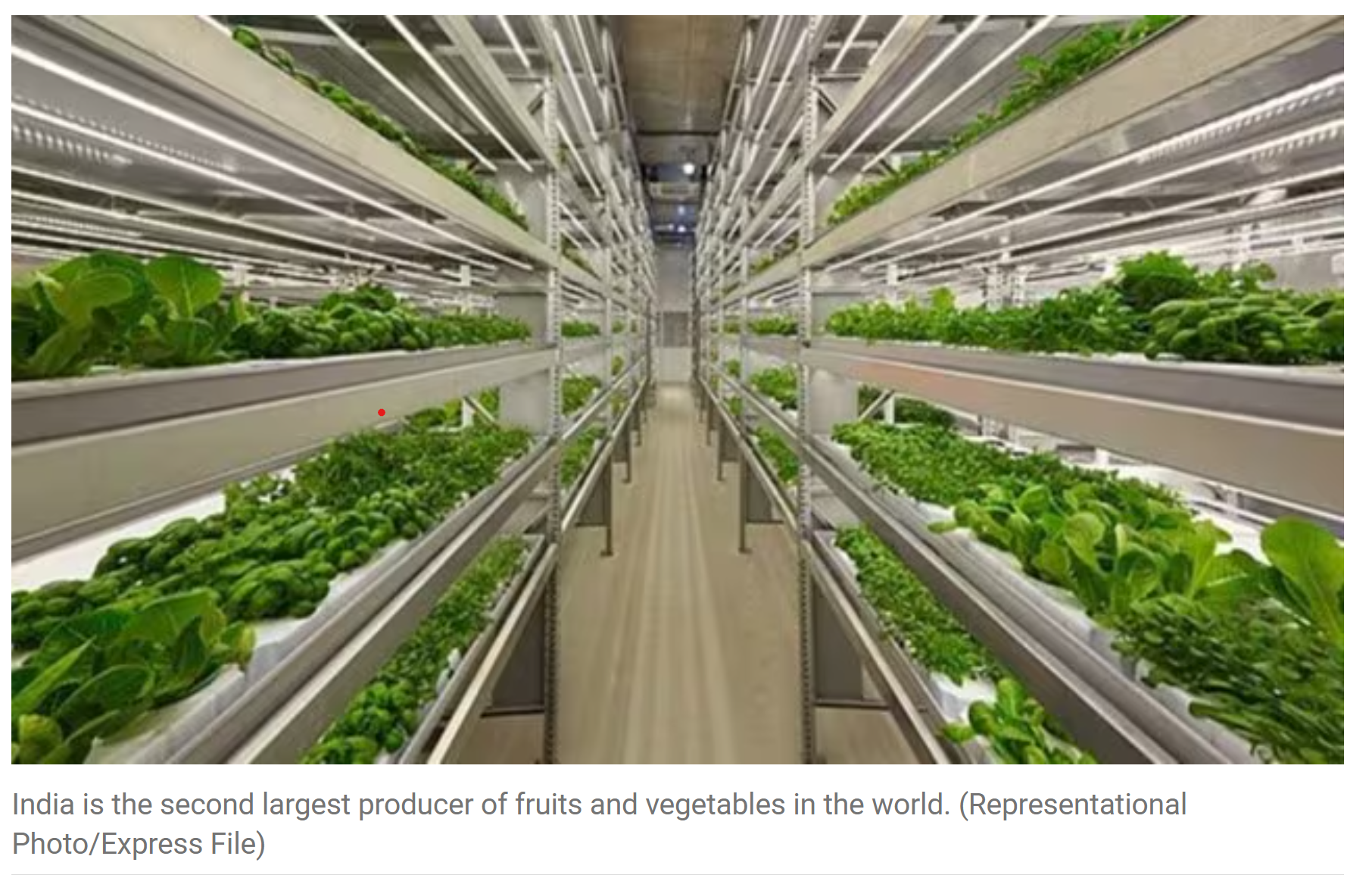'Act4Dyslexia' Campaign

- 29 Oct 2024
In News:
- On October 27, 2024, prominent landmarks such as Rashtrapati Bhawan, Parliament House, India Gate, and the North and South Blocks in Delhi were illuminated in red to raise awareness for Dyslexia and other learning disabilities.
- Similar illuminations took place in major cities like Patna, Ranchi, Jaipur, Kohima, Shimla, and Mumbai, highlighting the importance of dyslexia awareness.
Key Highlights:
- Collaboration for Awareness:
- The campaign is organized in collaboration with UNESCO Mahatma Gandhi Institute of Education for Peace and Sustainable Development (MGIEP) and the ChangeInkk Foundation.
- Its goal is to remove stigma and foster understanding of dyslexia and other learning disabilities, which affect 20% of India’s population—around 35 million students.
- Flagging off the ‘Walk4Dyslexia’:
- The ‘Walk4Dyslexia’ event, aimed at promoting collective action for dyslexia awareness, was flagged off by Shri Rajesh Aggarwal, Secretary of the Department of Empowerment of Persons with Disabilities (DEPwD), along with Mr. Shombi Sharp, UN Resident Coordinator in India.
- The walk was organized by ChangeInkk Foundation, UNESCO MGIEP, Orkids Foundation, and Soch Foundation.
- Growth of the Campaign:
- The Act4Dyslexia campaign saw a significant expansion in 2024, with over 1,600 walks held across the country, from state capitals to villages, engaging over 4 lakh participants.
- The campaign mobilized 2 billion steps in support of dyslexia awareness, with 150+ organizations joining forces.
- Focus on Equal Rights and Opportunities:
- Dyslexia and other specific learning disabilities (SLDs) were officially recognized under the Rights of Persons with Disabilities Act, 2016. This law mandates equal educational and employment opportunities for individuals with disabilities.
- The National Education Policy (NEP) 2020 further emphasizes inclusive education, calling for early identification, teacher capacity building, and necessary support and accommodations.
- Understanding Dyslexia:
- Dyslexia is often misunderstood as a sign of being a "slow learner", but people with dyslexia often excel in areas like logical reasoning, problem-solving, and innovation.
- Notably, 40% of self-made millionaires have dyslexia, and historical figures like Albert Einstein were also dyslexic.
- Global Impact:
- The campaign aligns with the Sustainable Development Goals (SDGs), aiming to unlock the untapped potential of individuals with learning disabilities, thereby contributing to societal development at a global level.
New Disability Certificate Rules (RPwD Rules, 2024)

- 29 Oct 2024
In News:
- The Rights of Persons with Disabilities (RPwD) Rules, 2024, were amended by the Union Government in the wake of the Puja Khedkar controversy, where an IAS probationer was dismissed for alleged forgery in her disability and caste certificates.
- National Platform for the Rights of the Disabled (NPRD) has called for a rollback of the new rules, citing that they make the process of obtaining disability certificates more stringent and cumbersome.
Key Changes Under the New RPwD Rules, 2024
- Authority for Issuing Disability Certificates:
- Only a designated medical authority or a notified competent medical authority at the district level can issue disability certificates.
- NPRD had proposed that experts from non-profits also be authorized to carry out checks, but this suggestion was not accepted.
- Colour-Coded UDID Cards:
- The new rules introduce colour-coded UDID cards to represent levels of disability:
- White (general disability)
- Yellow (moderate disability)
- Blue (severe disability with 80% or higher).
- The new rules introduce colour-coded UDID cards to represent levels of disability:
- Mandatory Online Applications:
- Applicants are now required to apply for disability certificates online, which could be problematic for individuals who lack access to the internet, smartphones, or are digitally illiterate.
- The NPRD has urged the government to retain the option for in-person applications.
- Extended Time for Certificate Issuance:
- The new rules extend the time for issuing disability certificates from one month to three months.
- Reapplication Requirement:
- If there is no action taken on an application for two years, the applicant will have to reapply, which the NPRD considers unacceptable, as it punishes disabled individuals for system failures.
NPRD's Concerns
- Regressive and Burdensome:NPRD believes the amendments are regressive, adding more hurdles for genuine persons with disabilities to access certificates, which are crucial for identification and entitlement to services.
- Lack of Accountability:The NPRD argues that the rules do not address the systemic issues highlighted by the Puja Khedkar case, such as the lack of accountability at various levels in the certification process.
- Online Application Issues:Many people from the disabled community may struggle with technical jargon used in online applications and may not have the resources to complete the process digitally.
- Delay in Issuance:Extending the time for issuing certificates to three months could create delays for those in urgent need of certification for services or entitlements.
Mission for Integrated Development of Horticulture (MIDH)

- 29 Oct 2024
In News:
- The Union Government has decided to introduce four new components under the Mission for Integrated Development of Horticulture (MIDH), aimed at promoting modern farming techniques:Hydroponics, Aquaponics, Vertical Farming&Precision Agriculture
Key Features of MIDH:
- MIDH is a Central Sponsored Scheme (CSS) aimed at the integrated development of various horticulture crops, including:
- Fruits, vegetables, root and tuber crops, mushrooms, spices, flowers, aromatic plants, coconut, cashew, cocoa, and bamboo.
- The scheme focuses on pre-production, production, post-harvest management, processing, and marketing activities.
Revision of Operational Guidelines and Cost Norms:
- The Ministry of Agriculture and Farmers' Welfare is revising the MIDH operational guidelines and cost norms, which were last updated in April 2014.
- The revised guidelines are expected to be released within one month.
- Cost norms are likely to increase by 20% compared to the existing rates, addressing concerns from various states about outdated guidelines.
Reason for Revision:
- Several states, including Odisha, have raised concerns over the old rates under MIDH. For example, Odisha’s Agriculture Minister highlighted that the state was still using 10-year-old rates.
- The Union Cabinet had already approved the rationalization of all CSS operating under the Ministry into two umbrella schemes:
- Pradhan Mantri Rashtriya Krishi Vikas Yojana (PM-RKVY)
- Krishonnati Yojana (KY)
Growth in India's Horticulture Sector:
- India’s horticulture production has significantly increased in recent years:
- Total production reached 334.60 million metric tonnes in 2020-21, up from 240.53 million metric tonnes in 2010-11.
- India is now the second largest producer of fruits and vegetables globally, surpassing food grain production.
- MIDH Annual Budget:The annual allocation for MIDH in the current financial year (2024-25) is ?2,000 crore.
Greenhouse Gas Levels Hit Record High in 2023: World Meteorological Organization (WMO)

- 29 Oct 2024
In News:
According to the WMO, the last time the earth had a similar CO2 concentration was 3-5 million years ago, when temperatures were 2-3°C higher and sea levels were 10-20 metres higher than they are now
Key Highlights:
- Record High Greenhouse Gas (GHG) Levels:
- In 2023, annual mean carbon dioxide (CO2) levels rose by 2.3 parts per million (ppm), reaching a new record of 420 ppm.
- This marks the 12th consecutive year with an increase of over 2 ppm in CO2 levels.
- Historical Context:
- CO2 levels not seen in 3-5 million years, when temperatures were 2-3°C higher, and sea levels were 10-20 meters higher than they are today.
- Key GHGs at Record Highs:
- The globally averaged surface concentrations of CO2, methane, and nitrous oxide all reached new highs in 2023.
- Contributors to the Increase in CO2:
- Natural Variability: Natural factors such as large vegetation fires and reduced carbon absorption by forests contributed to higher CO2 levels.
- Human Activity: High fossil fuel emissions from human and industrial activities also played a major role.
- El Niño Phenomenon: The El Niño event led to higher temperatures and drier conditions, exacerbating the rise in GHG levels through increased wildfires and reduced carbon absorption by land sinks.
- Climate Feedback Loop Concerns:
- The WMO warned of a vicious cycle:
- Climate change could cause ecosystems to become larger sources of GHGs.
- Wildfires could release more carbon, and warmer oceans may absorb less CO2, leading to more CO2 remaining in the atmosphere, accelerating global warming.
- The WMO warned of a vicious cycle:
- Radiative Forcing:
- Radiative forcing (the warming effect on climate) from long-lived GHGs has increased by 51.5% from 1990 to 2023, with CO2 contributing 81% of this increase.
- Methane Concerns:
- Methane saw its largest three-year increase between 2020 and 2022.
- This increase was linked to warmer temperatures and wetter land conditions during the 2020-2022 La Niña conditions, which caused an uptick in methane emissions from natural wetlands.
- Long-Term Impact of CO2:
- Given CO2's long atmospheric lifetime, even with rapid emissions reductions, the warming effect will persist for several decades.
C-295 Aircraft

- 29 Oct 2024
In News:
- Recently, PM Narendra Modi inaugurated the Final Assembly Line (FAL) plant in Vadodara, Gujarat, for the manufacturing of the C-295 aircraft.
- The plant is a joint venture between Tata Advanced Systems Ltd (TASL) and Airbus.
- This is the first private sector final assembly line for military aircraft in India.
Key Details:
- Manufacturing Timeline
- Contract: In September 2021, India signed a ?21,935 crore deal with Airbus Defence and Space to procure 56 C-295 aircraft to replace the IAF’s ageing Avro-748 fleet.
- Production Plan:
- The first 16 aircraft will be delivered from Airbus’s plant in Seville, Spain, between September 2023 and August 2025.
- The remaining 40 aircraft will be produced in India by TASL, with the first “Made-in-India” C-295 rolling out in September 2026.
- The entire fleet (56 aircraft) is expected to be delivered by August 2031.
- Key Features and Specifications
- Type: Tactical transport aircraft with a capacity of 5 to 10 tonnes.
- Maximum Speed: 480 km/h.
- Cabin Dimensions: 12.7 meters (41 feet 8 inches), the longest unobstructed cabin in its class.
- Passenger Capacity: Can accommodate up to 71 seats.
- Cargo Handling: Rear ramp door for quick loading/unloading and para-dropping.
- Short Take-off and Landing (STOL): Capable of operating from airstrips as short as 2,200 feet.
- Significance for the Indian Air Force (IAF)
- The C-295 will enhance the medium-lift tactical capability of the IAF.
- It will replace the ageing Soviet-origin AN-32 aircraft, which are nearing the end of their operational life.
- The C-295 will bridge the capability gap in troop and cargo transport over short and medium distances.
- Indigenous Content
- Indigenous Electronic Warfare Suite: All 56 aircraft will be equipped with an indigenous electronic warfare suite, developed by Bharat Electronics Ltd (BEL) and Bharat Dynamics Limited (BDL).
- Made-in-India Components: 96% of the work that Airbus does in Spain will be done at the Vadodara plant, making it one of the highest-ever indigenous contributions for an aircraft in India.
- Global Operations of the C-295
- The C-295 is operational in various challenging terrains worldwide, including:
- Brazilian jungles, Colombian mountains (South America)
- Deserts of Algeria and Jordan (Middle East)
- Cold climates of Poland and Finland (Europe)
- Military operations in Chad, Iraq, and Afghanistan.
- The C-295 is operational in various challenging terrains worldwide, including:
- Roles and Capabilities
- Tactical Transport: Can transport troops and supplies from main airfields to forward operating airfields.
- Short Take-off and Landing (STOL): Capable of operating from short, unprepared airstrips.
- Low-level Operations: Can conduct low-speed, low-level missions at 110 knots.
- Other Missions: Suitable for casualty evacuation, special missions, disaster relief, and maritime patrol.
